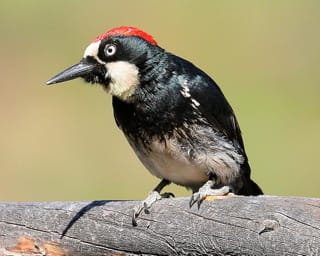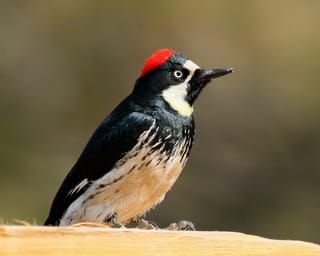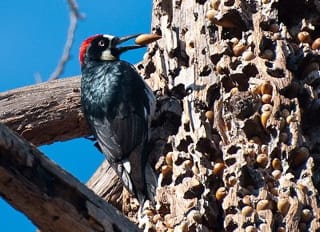Initially this guide displays common birds of all types that are flying right now in our area. Use the selectors below to view rare birds, view birds flying any time, restrict the output to a certain shape of bird, or search by name.
New Mexico is on the western edge of the Central Flyway which is one of the major migration pathways between north and south for birds traveling between breeding and wintering grounds along the Rocky Mountains. This has resulted in the state having an incredible diversity of birds with over 550 different species reported. A little more than half of this number are sighted annually on the Pajarito Plateau. Some of these birds are full-time residents, some migrate here for a few weeks or months, and other are only seen briefly as they pass through the region.
This guide features many of the birds known to frequent Los Alamos county by when they are likely to be seen in the area. You can get additional information on local birds by joining PEEC Birders or going to the eBird website. eBird also includes lists of rare bird sightings and birding hot spots.
Bird References
Birdweb
Cornell Lab of Ornithology
eBird
eNature
Institute for Bird Populations
National Audubon Society
New Mexico Ornithology Society
What Bird
xeno-canto
Subject Area Experts (all guides)
Steve Cary (butterflies)
Beth Cortright (insects)
Terry Foxx (invasive plants)
Leslie Hansen (mammals)
Richard Hansen (fish, mammals)
Dorothy Hoard (butterflies, trees)
Chick Keller (flowers, herbarium)
Shari Kelley (geology)
Kirt Kempter (geology)
Garth Tietjen (reptiles)
David Yeamans (birds)
Web Development and Content Management
Pat Bacha
Jennifer Macke
Graham Mark
Akkana Peck
Contact
Please contact us for local nature questions and sightings. We welcome comments, corrections, and additions to our guides.
For more information about local nature, please visit our Nature Blog or subscribe to PEEC This Week.
Make Selection
 Photo: male by Bob Walker  Photo: female by Bob Walker  Photo: acorn hoard or granary tree by Johnath |  Acorn WoodpeckerACWO (Melanerpes formicivorus)Family: Picidae (Woodpeckers) Size: 8 - 9.5 in (20 - 24 cm) Flies: Jan 01 - Dec 31 Morphology: both sexes are brownish-black with white eyes and face; the red cap on males starts at the forehead, while the one on females has a black band between it and the face Status: native; locally common Food source: acorns, sap, fruit and insects Habitat: open oak/oak-pine forest Acorn Woodpeckers are most often described as having a clown-like appearance due their brightly covered red, black and white faces. Their flight pattern is distinctive in that they will flap their wings a few times and then drop a foot. As their name implies, acorns make up the majority of their diet. The birds drill numerous holes in dead trees, telephone poles, and wooden buildings to store acorns. Such caches can be used across generations and can be riddled with thousands of holes. In contrast to other woodpeckers, while these woodpeckers eat insects, they rarely dig into wood to find them. Acorn Woodpeckers have a complicated social structure. They live in communal groups consisting of several breeding males and females. The nest consists of a cavity in a tree. Both parents as well as helpers will take turns incubating the eggs. The eggs hatch in a little less than two weeks and fledge at about a month. Parents and helpers take care of the babies. Info Photos Distribution Frequency Featured |
